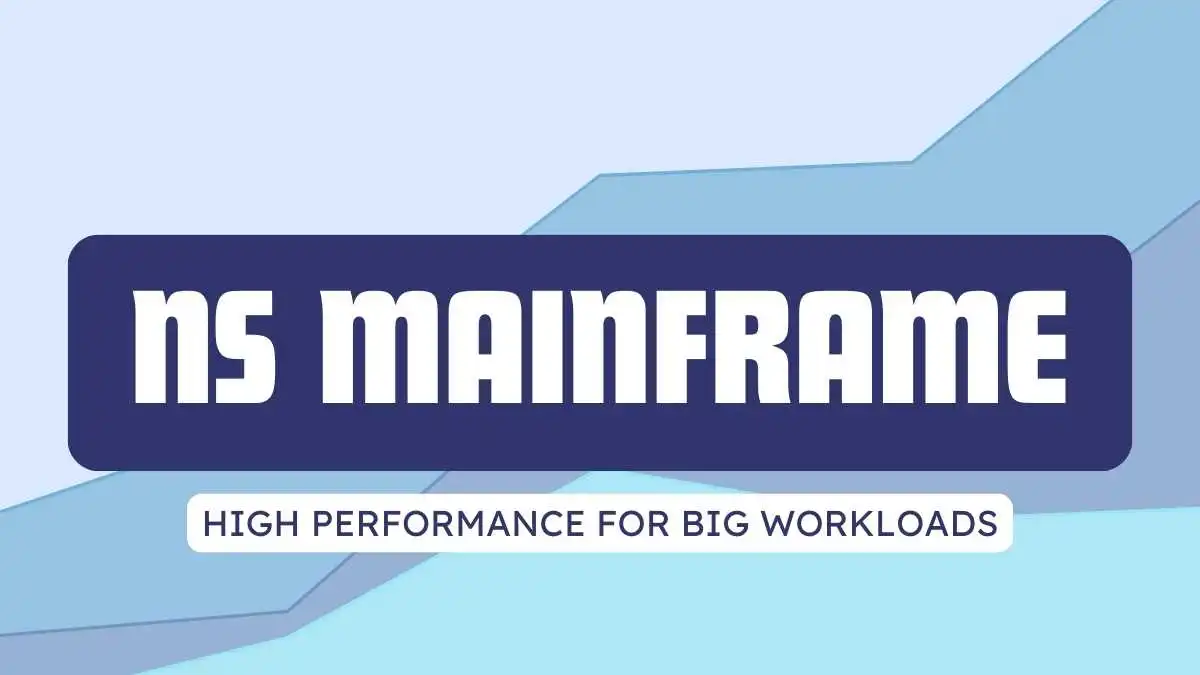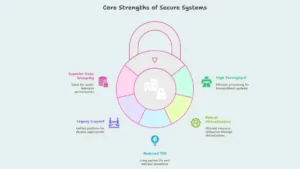TECHNOLOGY
NS Mainframe: High Performance for Big Workloads

NS Mainframe is a high-performance computing system developed for handling extensive data processing tasks, especially in large organizations. It offers centralized control, robust processing power, and secure data management capabilities, making it ideal for industries that require reliability and scalability, such as banking, insurance, and government sectors.
These systems are designed to manage thousands of simultaneous transactions with high speed and minimal downtime. NS Mainframes support integration with both legacy and modern applications, ensuring long-term usability. Their architecture emphasizes stability, data integrity, and resource efficiency, which is why they remain a core component in enterprise-level IT infrastructures.
Evolution from Legacy to Modern
Created to handle major batch processing and transaction processing, NS mainframes have been developed to be able to handle hybrid clouds, live-data streaming, cybersecurity models, and open-source interoperability. Their development has made them an essential component in industries where information integrity, speed, and accessibility are non-negotiable.
Key Features of NS Mainframes
1. High Performance and Scalability
NS mainframes are constructed to handle tens of thousands of transactions per second with exceptionally low latency. Organizations can scale vertically so that they can add bigger computational ability without the need to change the architecture, to help organizations to have flexibility as business needs expand.
2. Robust Security
The NS mainframe has security built in. Such systems have sophisticated encryption techniques, trusted boot systems, role controls, and ready configurations with compliance. Their security-first architecture is specifically why they are well-configured in industries that process sensitive information, like finance and healthcare.
3. Unmatched Reliability and Availability
NS mainframes can attain near-100 percent availability through features such as dynamic workload balancing, fault tolerance, and automatic failover. They also offer high reliability to survive even in the event of hardware or software failure- something that is critical in the 24/7 operation era.
4. Support for Modern Workloads
The current NS mainframe is not only a legacy system; it is constructed to suit hybrid IT settings. They extend containerization, cloud native apps, RESTful API, and integrations with AI and machine learning frameworks. Such contemporary flexibility makes them applicable in digital transformation processes.
5. Advanced Analytics Capabilities
Real-time analysis of large amounts of data can be performed and processed using NS mainframes. They help organizations provide decision-making, prediction modeling, and operation optimization by integrating with analytics platforms.
TRENDING: NippyBox: The Rise and Fall of a Cloud Storage Service
Integration with Emerging Technologies
1. Cloud Computing
- Supports hybrid and multi-cloud environments.
- Enables seamless data exchange between mainframes and cloud platforms.
- Enhances scalability, flexibility, and cost-efficiency.
2. Artificial Intelligence (AI) and Machine Learning (ML)
- Runs AI/ML models directly on the mainframe or in conjunction with external frameworks.
- Enables real-time insights for fraud detection, predictive maintenance, and customer behavior analysis.
- Supports data-heavy applications without performance degradation.
3. DevOps and Agile Methodologies
- Compatible with modern DevOps tools like Jenkins, Git, Ansible, and Docker.
- Facilitates CI/CD pipelines and automation within mainframe environments.
- Reduces development cycles and boosts agility for legacy and modern applications alike.
4. API Integration and Microservices
- Provides support for RESTful APIs and service-oriented architecture.
- Allows mainframe applications to interact with microservices and web applications.
- Enhances interoperability across enterprise systems.
Built-In Security

Applications Across Industries
Finance and Banking
Finance and banking applications use NS mainframes to enable secure real-time processing of millions of transactions per day to operational core capabilities such as payments, trading, compliance, fraud detection as well as customer data management.
Healthcare
IIn healthcare, NS mainframes handle electronic healthcare records, processing insurance claims, and supply data security, reliability, and compliance to make uninterrupted, large amounts of medical and administrative workflow possible.
Government and Public Sector
Governments are using NS mainframes to execute citizen services, run tax systems, dispense social security, and run data on public safety. These systems provide the large-scale security and stability required to handle millions of records and comply with national and international information protection laws.
Retail and E-commerce
NS mainframes provide inventory systems, supply chain, customer database, and point-of-sale (POS) systems to retailers. They have processing capabilities that enable real-time analysis to conduct dynamic pricing, customization for customers, and effective logistics management.
NS Mainframe vs Other Systems
| Feature | NS Mainframe | Traditional Servers | Cloud Computing Systems |
| Performance | Extremely high, handles millions of transactions per second | Moderate to high, depends on configuration | Scalable, but depends on internet bandwidth |
| Reliability/Uptime | Near 100% uptime, highly fault-tolerant | Prone to hardware/software failures | High uptime, but affected by network issues |
| Security | Very high, enterprise-grade | Moderate, depends on setup | High, but may raise concerns about data control |
| Scalability | Vertical scalability (within same system) | Limited scalability | Horizontal scalability (add more instances) |
| Cost | High initial investment and maintenance | Lower upfront cost, moderate maintenance | Pay-as-you-go, but costs can grow over time |
The Future
The future of the NS mainframes is bright because they still progress in their financial provisions of AI, cloud integration, and DevOps. They are unsurpassed in their reliability, scalability, and security, so they are invaluable to mission-critical workloads. With the growth of modernization and hybrid IT landscapes, NS mainframes will continue to play a crucial role as an enterprise base of computing systems that is especially essential in the industries that require high performance, resiliency, and adherence in the more data-driven and digital interconnected world.
Conclusion
The NS mainframe is an important enterprise belonging and is unsurpassed in reliability, security, and performance of key enterprise workloads. It integrates with other technologies such as cloud, AI, and DevOps despite some challenges in the business, such as excessive cost and shortage of the right talent, that demonstrate its flexibility. The NS mainframe is no longer a relic of the past, as companies are getting modernized, this mainframe of the past is a strategy ready to redefine enterprise on digital platforms.
-

 BIOGRAPHY8 months ago
BIOGRAPHY8 months agoBehind the Scenes with Sandra Orlow: An Exclusive Interview
-

 HOME1 year ago
HOME1 year agoDiscovering Insights: A Deep Dive into the //vital-mag.net blog
-

 HOME1 year ago
HOME1 year agoSifangds in Action: Real-Life Applications and Success Stories
-

 BIOGRAPHY1 year ago
BIOGRAPHY1 year agoThe Woman Behind the Comedian: Meet Andrew Santino Wife




























